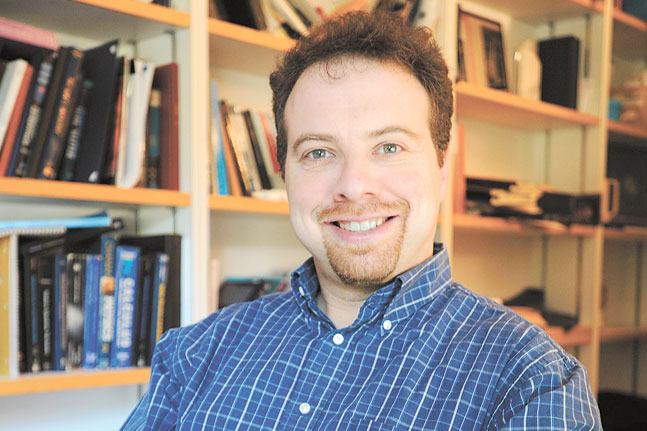
Adam Riess Wins Nobel Prize
2011Adam Riess, MIT ’92, the Krieger-Eisenhower Professor in Physics and Astronomy, a Gilman Scholar at the Johns Hopkins University, and a scientist at the Space Telescope Science Institute, was awarded the 2011 Nobel Prize in Physics by the Royal Swedish Academy of Sciences. The academy recognized him for leadership in the High-z Team’s 1998 discovery that the universe’s expansion rate is accelerating, a phenomenon widely attributed to a mysterious, unexplained “dark energy” filling the universe.
Riess shared the prize with Saul Perlmutter, an astrophysicist at the University of California, Berkeley, and the Lawrence Berkeley Laboratory. Their Supernova Cosmology Project team published similar results shortly after those published by Riess and High-z teammate Brian Schmidt of the Australian National University. As a result, both teams shared the Peter Gruber Foundation’s 2007 Cosmology Prize—a gold medal and $ 500,000—for discovering dark energy, which Science Magazine called “The Breakthrough Discovery of the Year” in 1998. The researchers also shared the 2006 Shaw Prize in astronomy for the same discovery.
Considered the most prestigious prize in the world, the Nobel has been awarded for achievements in physics, chemistry, physiology or medicine, literature, and peace since 1901 by the Nobel Foundation in Stockholm, Sweden. Riess received a medal and diploma and shared a cash award of $1.49 million presented at a ceremony in Stockholm in December.
An overjoyed Riess thanked the Nobel Foundation for the award and said, “My involvement in the discovery of the accelerating universe and its implications for the presence of dark energy has been an incredibly exciting adventure. I have also been fortunate to work with tremendous colleagues and powerful facilities. I am deeply honored that this work has been recognized.”
